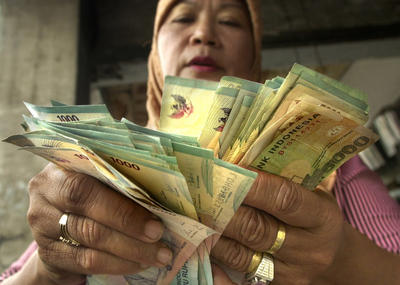Second, Indonesia’s 99-per-cent foreign-equity participation limit causes suspicion that Indonesia is too open relative to its ASEAN neighbours. Are these anxieties justified?
In recent years, there has been significant growth in the number of banks operating in Indonesia with more than 50-per-cent foreign ownership. In 1995, it was 26 per cent; by 2009, it was already 52 per cent. In contrast, there has not been significant growth in the proportion of assets owned by foreign banks: foreign-bank assets remained at 32 per cent of total banking assets between 2005 and 2009. These figures imply that foreign investors have been buying shares in banks with fewer assets. State-owned bank assets have also been growing significantly to match the growth of foreign-bank assets.
The entry of foreign-owned banks may be thought to increase competition in the domestic banking industry. Three potential indicators of greater competition in the banking sector are falls in the net interest margin, the ratio of operating expenses to operating income, and bank profitability. Based on these indicators, there is no evidence of increased competition in Indonesia’s banking sector.
The net interest margin remains high, and higher for domestic banks — including national private non-foreign exchange banks, regional-government banks, state-owned banks and national private foreign-exchange banks — than for foreign banks and joint-venture banks. Indonesia’s high net interest margin is also partly due to its poor legal system. Transaction costs are high because of the reliance placed on debt collectors to collect debts and seize collateral. However, foreign banks also use debt collectors (as was seen in the recent death of a Citibank credit-card user). This is probably why the net interest margin of foreign-bank branches is likely to be higher than that of their parent banks.
Similarly, state banks have had the highest operating expenses to operating income since 2003, followed by national private non-foreign exchange banks, while that of foreign banks and joint-venture banks has been lower.
The profitability of the Indonesian banking industry as a whole has increased and, like their domestic counterparts, foreign-owned banks are very profitable. In fact, foreign banks were the most profitable for most years between 2003 and 2012, with return on assets ranging from just under 3 per cent to above 7 per cent. The conventional range for banks in the Philippines, Thailand, Malaysia, Singapore and the US is 1.0-1.5 per cent.
Although these trends may be due to portfolio structure rather than ownership structure, the above indicators suggest that foreign-bank entry has not created much competition in the domestic banking industry. Indonesia’s oligopolistic banking structure and the fact that foreign and domestic banks serve segmented markets are likely to be the main reasons that competition in the banking industry has not risen.
Domestic and foreign banks also have different ownership structures. Private banks are usually owned by conglomerates, which serve a lot of their own businesses. The treatment of state-owned banks is also different; unlike Singapore’s state-owned banks, which have been corporatised, Indonesia’s state-owned banks are extensions of the bureaucracy. They have exclusive access to public-sector funds, and are the supplier of funds in the inter-bank market, while private and foreign banks consume these funds.
Another important issue is how much foreign banks contribute to the real economy. The contribution of foreign banks and joint-venture banks to the real sector seems to be limited. However, if we add national private foreign-exchange banks — given that about 50 per cent of their assets are owned by banks with some foreign ownership — the contribution of foreign-owned banks is not insignificant. Based on the author’s study, banks with foreign ownership (which include national private banks with foreign ownership) are estimated to have contributed to about 41 per cent of total loans for investment in 2011. Moreover, foreign-owned banks may provide a cushion for any crisis that originates in the host country, as was the case during the 1997/98 Asian financial crisis.
Indonesia should not be too anxious about foreign-bank entry. The key question is how foreign-bank entry can best contribute to the domestic banking sector — including its competitiveness — and the real economy. Evidence shows that outstanding loans and private deposit grossly and disproportionately benefit Jakarta, so one of the strategies should be to encourage a more equal distribution of foreign-bank presence. Strategies surrounding foreign-bank entry may also include re-orienting loans to investment, instead of simply allowing banks to profit from Indonesia’s lucrative market. Of course, this rule must apply to all banks, because WTO commitments prohibit discriminatory action against foreign-owned banks.
Lastly, how foreign-owned banks perform will depend on the environment in which they are operating. If monitoring of the banking sector is effective, foreign-owned banks will not dare to behave recklessly, and vice versa.
Indonesia can no longer decide against playing host to foreign banks — especially if it is serious about its commitment to the ASEAN Banking Integration Framework. Whether or not to be a good and strategic host is the decision Indonesia must now make.
Maria Monica Wihardja is a researcher at the Centre for Strategic and International Studies, Jakarta, and a lecturer at the Department of Economics, University of Indonesia. She is also Associate Editor at the EAF Indonesia desk.
A version of this article will be published in The Jakarta Post.

